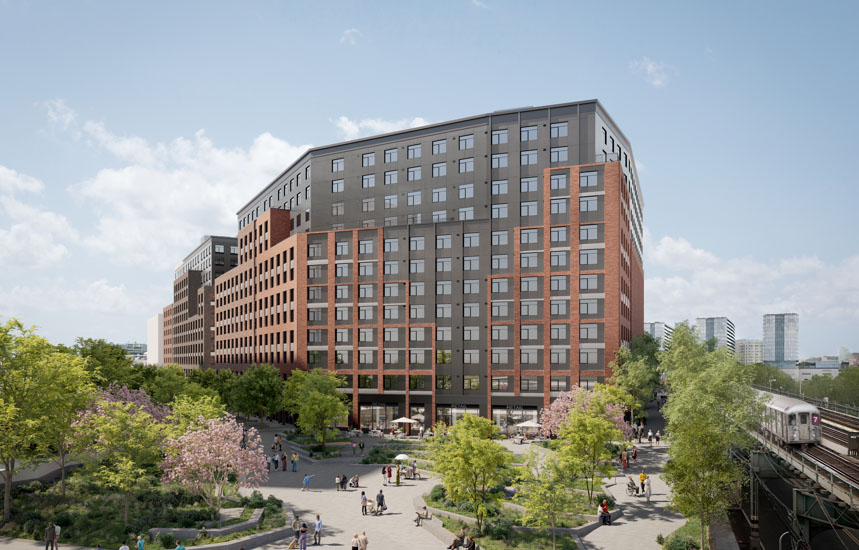CHPC releases report on NYCHA’s Triborough Pilot Project
NEW YORK, NY Citizens Housing & Planning Council (CHPC) has released an interim study examining an innovative New York City Housing Authority (NYCHA) pilot program that transferred management of six Section 8 properties to a new public-private partnership, Triborough Preservation Partners, making new capital funds available for repairs and introducing new property management. The report provides progress on the work, including the collection of quantitative data on building performance and management, interviews with the property management staff, and a survey of residents.
“The injection of financial resources has been a game-changer for the families living in these buildings,” said Jessica Katz, executive director of CHPC, an independent nonprofit research and education civic organization focused on housing in the city since 1937. “In designing this innovative program, NYCHA identified new partners and new resources to improve quality of life for residents.”
This study – which is available here – evaluated the impact of the changes at the six sites over the 12-month period prior to the renovations and transfer to Triborough management (January-December 2014) and a 12-month period after transfer of management, while construction work was ongoing (January-December 2016).
Pilot program participants were: Bronxchester Houses, 510 East 156th St., Bronx; Saratoga Square, 55 Saratoga Ave., Brooklyn; and Milbank-Frawley, 1780 Madison Ave.; East 120th St., 438 East 120th St.; Campos Plaza I, 635 East 12th St.; East 4th St. Rehab, 277 East 4th St., all in Manhattan. For comparison, CHPC and NYCHA selected a control group of similar NYCHA properties: Murphy, 1010 East 178th St., Bronx; Palmetto Gardens, 85 Palmetto St., Brooklyn; and, Park Ave.-East 122nd-123rd St., 120 East 123rd St., Jefferson, 335 East 111th St., Campos Plaza II, 643 East 13th St., and, Lower East Side Rehab (Group 5), 89 Ave. C, all in Manhattan.
CHPC found that:
the volume of work orders plummeted at the pilot buildings;
rent collection and electricity usage improved; and,
residents in the pilot group were far more positive about living conditions and their outlook for the future.
The pilot program began in December 2014, when Triborough – a joint venture between NYCHA, L+M Development Partners, Preservation Development Partners – closed on financing that funded the rehabilitation of the 6 developments, including renovating both facades and interiors, improved landscaped areas and on-site social services. The renovations cost approximately $80 million for 874 units (about $90,000 per apartment). Tenants pay 30% of their income towards rent, and a project—based Section 8 contract covers the rest.
CHPC’s report also included interviews with residents conducted by Baruch College Survey Research. The survey found that Triborough residents’ ratings of their housing surpassed, mostly by very wide margins, those of NYCHA residents, on almost every measure. They survey found all ratings of Triborough conditions outpacing that of NYCHA, with residents’ ratings of their own apartments, the overall building, and elevators outpacing NYCHA residents’ ratings by at least 2-1.
Additionally, residents felt safer (65% in the pilot group felt very safe, compared with 37% in the control group), that day-to-day management was responsive (86% in the pilot group, compared with 55% in the control group), and that emergency repairs were fixed more rapidly (73% in the pilot group, compared with 47% in the control group).
“It was very important to show not only the improvements in conditions, but how those improvements affected people’s lives,” said Micheline Blum, Director, Baruch College Survey Research. “Our survey provided clear evidence that these differences in conditions made a difference in residents’ daily lives, in their comfort and sense of safety, and in how they felt about their homes and their surroundings.”
She said, “CHPC does research that doesn’t just sit on a shelf. It contributes to improving housing in NYC— and improving New York City is what we hope our research does.”
CHPC continues to collect data during the post-construction period and plans to issue a final report by early 2019. But these interim findings highlight results of the pilot to date: “NYCHA needs new partnerships and new resources.” Said Katz. “This pilot shows that innovation is yielding success. This public-private partnership has been a win for NYCHA, a win for its partners, and most importantly, a win for the tenants.”
Related Cos. and Sterling Equities open housing lottery for Willets Point Commons


Strategies for turning around COVID-distressed properties - by Carmelo Milio







.gif)


.jpg)
.gif)